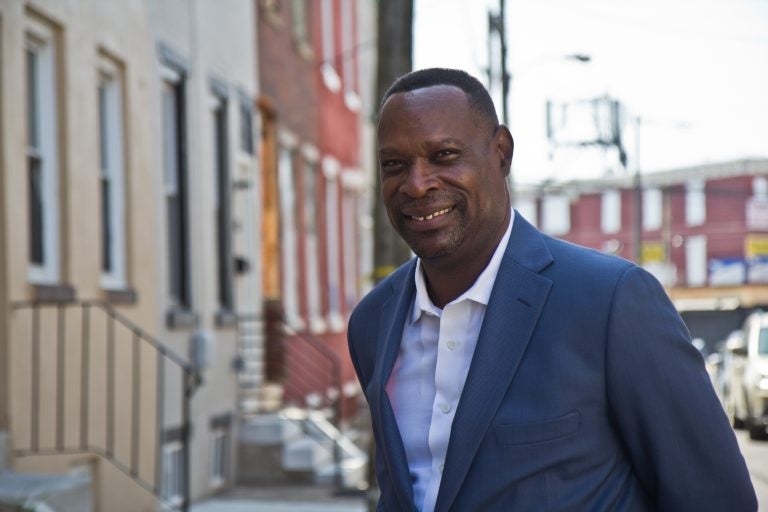The Elusive Abundance Agenda
By David Langlieb
Anyone who has spent time in Philadelphia’s most disinvested communities will sooner or later come across the tragic spectacle of unsheltered individuals sleeping on sidewalks in front of vacant, untenanted property. This kind of scene presents the city’s affordable housing crisis at its most stark. We have land, we have resources, and we have a high-need population which lacks safe, affordable housing. What we have lacked historically is the collective will to do enough about it.
The June 12th passage of Mayor Cherelle Parker’s H.O.M.E. Initiative marks the most serious attempt that our elected officials have made in recent memory towards addressing Philadelphia’s housing supply and affordability crisis. This crisis has plagued our city since its postwar population decline began to reverse in the early 2000s. The initiative – of which PAF is a part – comes along just as a burgeoning political movement for more supply and a streamlined development process has begun to pick up speed. As we consider the potential of H.O.M.E. and the deployment of $800 million in bond proceeds, the time is ripe for an honest, comprehensive examination of urban housing policy over the last several decades to help us avoid repeating the mistakes of the past.
There is plenty of blame to go around for societal failures at housing our citizenry, both in Philadelphia specifically and in the country writ large. The abandonment of federal commitments to cities has been a long-term project of the right wing since the election of 1980 and the Reagan-era cuts to housing aid that followed. These policies presaged the deeper, unconscionable cuts that conservatives are presently attempting to make to the Department of Housing and Urban Development (HUD) and the machete being taken to nearly all non-military, discretionary domestic federal spending that keeps at least portions of our weathered social safety net intact.
But as liberal journalists Ezra Klein and Derek Thompson point out in their recently released, carefully argued manifesto Abundance, the activist left needs to own its share of the blame. Ideologically sympathetic to a progressive domestic political program, Klein and Thompson shine light on the uncomfortable truth that it is in the country’s most progressive cities and states where urgent public crises (namely the shortage of affordable housing and new infrastructure) have been the most unsolvable.
The book opens with a demoralizing account of the story of high-speed rail in California, a fiasco now more than 40 years in the making. Since a 1982 bond issuance authorizing the first tranche of funding, only small portions of track have been laid, and the section currently under construction has yet to come anywhere near the state’s major population centers. The most optimistic projections now estimate that a completed system connecting San Francisco, Los Angeles and San Diego by rail will be done in 2050. I was born one year after the initial bond issuance, and I’ll be collecting Social Security by the time that trip is possible.
It didn’t used to be this way in America, and it isn’t this way everywhere. It took barely a year (1931) to complete the Empire State Building in Manhattan – work that was done with vastly inferior technology and more primitive construction methods than we have available today. It costs around $68 million to build a kilometer of railroad track in America on average – three to four times what it costs to build track in authoritarian China, and at least twice what it costs to build in highly developed, democratic Europe.
Klein and Thompson are policy wonks at heart, but the tone of Abundance is sad and sentimental. I share their frustration. We are maddeningly, tantalizingly close to success – green energy technology and efficiencies in construction have driven down the cost of quality, sustainable building throughout the world, but disproportionately beyond our borders. Cheap public debt and historically low interest rates were available to us from the early 1990s through the pandemic-induced inflation of 2020. We could, if we had the will, build a dramatically better country – a more abundant society with more quality affordable housing, more quality infrastructure and a higher quality of life for a greater proportion of our citizenry. And yet we struggle to get out of our own way.
What is the root problem here? Conservatives like to point fingers at union labor costs driving up development and infrastructure budgets, but that fails to explain how heavily unionized European countries like Spain, France, and Germany are nonetheless able to build less expensively than in the United States. Klein and Thompson identify the cold hard truth – well-intentioned reforms designed to enhance local democracy, consumer protections, and environmental safety in the 1960s and 70s have been weaponized to make progressive housing and infrastructure policy extraordinarily difficult to implement. This happens most reliably (and most infuriatingly) in the liberal states and cities where those reforms are most robust and where the greatest number of choke points in the development process have been engineered into the system.
In 1965, Ralph Nader published Unsafe at Any Speed: The Designed-In Dangers of the American Automobile and the book remains a foundational text for left wing activists to this very day. It was important and effectual work, identifying manufacturing flaws in the Chevrolet Corvair and other corners being cut by automobile manufacturers that made cars needlessly dangerous. Unsafe at Any Speed led to numerous design mandates and policy reforms that improved the safety of American highways and automobiles. But as Klein and Thompson argue, the strategies utilized by Nader and his cadre of activists to achieve these gains have had lasting negative effects which need to be reconsidered and countered.
The core tactic of the activist left as pioneered by Nader and his acolytes in the 1960s and 70s was suing the government. This made sense when it came to improving highway safety, but the effect of those early successes was to convince the most publicly engaged progressives that the main purpose of community activism was adversarial pushback and delay – on government to start, but also on private interests utilizing public money, and ultimately on anyone doing anything that has implications of any kind on the community. That covers not just the safety of roads and industrial construction, but also zoning codes and housing density, aesthetic home design, and a litany of other opportunities to introduce choke points in the development process which delay even small, by-right projects and drive up costs.
In operating this way, the tactic eventually became the strategy. Jurisdictions controlled by the activist left made it easier to sue the government and more burdensome for anyone to build. Zoning codes became more restrictive, necessitating variances for even modest increases to housing density and further enshrining uncertainty and delay into the development process. Extensive environmental impact statements are now commonplace even for green energy infrastructure projects being developed primarily to reduce carbon emissions. This has had a detrimental impact on our carbon footprint while simultaneously undercutting the economic development potential and political support for these new technologies. In his review of Abundance, commentator Patrick Ruffini describes the Naderite movement succinctly: “This was a liberalism more interested in suing the government and limiting building projects…than it was in creating jobs for the working class through large-scale public works projects.”
When I say we have lacked the collective will to solve these problems, I do mean collective. The activist left overuses litigation and other tools of delay, but ordinary citizens are far too often reflexively sympathetic to a NIMBY (‘Not In My Back Yard’) ethos that generates community opposition for even minor, buildable-by-right development projects. A more prosperous, more equitable future of affordable housing and infrastructure development can still be possible, but it will require wholesale changes in what we consider to be the role of the public citizen. We will need to be less provincial, less change-averse, and more reflexively supportive of community development. I am hopeful that the deployment of H.O.M.E. funds in particular will not be stymied by needless delays and reflexive NIMBYist opposition. Time will tell.
There is evidence that the message is finally breaking through. Abundance has been on the New York Times bestseller list since its April publication, and the arguments made by Klein and Thompson clearly have resonance. YIMBY (‘Yes In My Back Yard’) activism has begun to establish a foothold in liberal American cities, including Philadelphia. Local efforts at expanding the supply of affordable housing now acknowledge that we are not simply facing a resource problem – we also need a more reliable development process with faster permitting and a more sensible zoning code. The battle lines of the fight and the contours of public opinion are always shifting; but better infrastructure, more quality housing and the future of our city and our country in no small way depend on us embracing an agenda of abundance.


